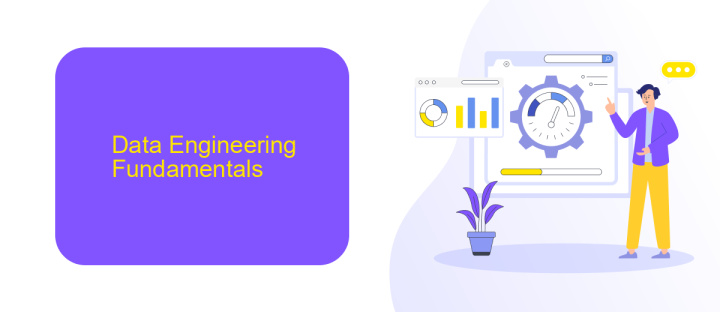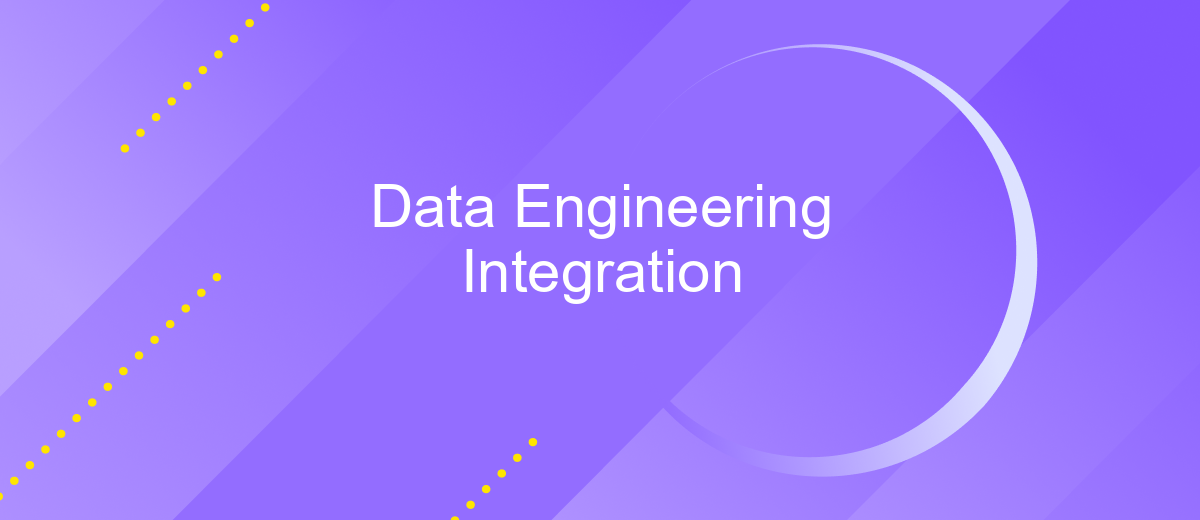Data Engineering Integration
Data Engineering Integration is a crucial aspect of modern data management, enabling seamless data flow and connectivity across diverse systems. By integrating various data sources, businesses can harness the full potential of their data, driving informed decision-making and operational efficiency. This article explores the strategies, tools, and best practices for effective data integration, ensuring robust and scalable data ecosystems.
Introduction
Data engineering integration is a crucial aspect of modern data management, enabling seamless data flow between disparate systems and ensuring data consistency and reliability. As organizations increasingly rely on diverse data sources, the need for robust integration solutions becomes paramount. Effective data integration not only enhances operational efficiency but also provides a holistic view of business processes.
- Streamlining data from multiple sources
- Ensuring data quality and consistency
- Facilitating real-time data access
- Reducing manual data handling errors
Services like ApiX-Drive play a pivotal role in simplifying the data integration process. ApiX-Drive offers automated workflows that connect various applications and services without the need for extensive coding. By leveraging such tools, businesses can focus on deriving insights from their data rather than getting bogged down by integration challenges. This leads to more informed decision-making and a competitive edge in the market.
Data Engineering Fundamentals

Data engineering is the foundation of any data-driven organization, involving the collection, storage, and processing of data to make it usable for analysis and decision-making. It encompasses various practices and technologies, including data warehousing, ETL (Extract, Transform, Load) processes, and data pipeline creation. Key components include data ingestion, which involves collecting data from multiple sources, and data transformation, which ensures the data is cleaned and formatted appropriately for analysis. Data engineers must also focus on data quality and governance to ensure the reliability and security of the data.
Integrating different data sources is a crucial aspect of data engineering. Tools and services like ApiX-Drive can significantly simplify this process by automating the integration of various applications and databases. ApiX-Drive allows for seamless data transfer between platforms, reducing the manual effort required and minimizing errors. By leveraging such services, data engineers can ensure that data flows efficiently across the organization, enabling timely and accurate insights. This automation not only enhances productivity but also ensures that data remains consistent and up-to-date across all systems.
Integration Challenges and Best Practices

Data engineering integration presents several challenges, including data silos, inconsistent data formats, and real-time processing requirements. Overcoming these hurdles is essential for ensuring seamless data flow across various systems and applications.
- Ensure data quality and consistency by implementing robust data validation and cleansing processes.
- Utilize scalable ETL (Extract, Transform, Load) tools to handle large volumes of data efficiently.
- Adopt API-driven integration platforms like ApiX-Drive to streamline the connection between disparate systems.
- Implement real-time data processing frameworks to support timely decision-making.
- Maintain comprehensive documentation and monitoring to quickly identify and resolve integration issues.
By following these best practices, organizations can mitigate the complexities of data engineering integration. Leveraging tools such as ApiX-Drive can significantly simplify the integration process, enabling businesses to focus on deriving actionable insights from their data. Consistent monitoring and maintenance are crucial to ensure the long-term success of data integration initiatives.
Emerging Trends and Technologies

Data engineering is evolving rapidly, driven by the need for seamless integration of diverse data sources. One emerging trend is the adoption of real-time data processing, which allows businesses to make instant decisions based on live data streams. This is particularly crucial for industries like finance and e-commerce, where timely insights can significantly impact operations.
Another significant trend is the increasing use of cloud-based data integration platforms. These platforms offer scalable solutions that can handle large volumes of data from various sources, making them ideal for enterprises of all sizes. Additionally, the rise of AI and machine learning in data engineering is transforming how data is processed, analyzed, and utilized.
- Real-time data processing
- Cloud-based data integration platforms
- AI and machine learning in data engineering
- API-driven integration services like ApiX-Drive
ApiX-Drive, for instance, simplifies the process of integrating multiple data sources by providing a user-friendly interface and robust API capabilities. This enables businesses to automate data workflows and ensure consistent data quality across various applications. As these technologies continue to evolve, they will undoubtedly shape the future of data engineering integration.
Conclusion
In conclusion, Data Engineering Integration plays a critical role in ensuring that data flows seamlessly across various systems, enabling organizations to make informed decisions. The integration process involves the careful orchestration of data from disparate sources, transforming it into a unified format that can be easily analyzed and utilized. This not only enhances operational efficiency but also provides a competitive edge by delivering actionable insights in real-time.
Tools like ApiX-Drive have revolutionized the way integrations are managed, offering user-friendly interfaces and robust functionalities that simplify the setup and maintenance of data pipelines. By automating routine tasks and ensuring data consistency, such platforms allow data engineers to focus on more strategic initiatives. As the landscape of data engineering continues to evolve, leveraging advanced integration services will be pivotal in harnessing the full potential of organizational data.
FAQ
What is Data Engineering Integration?
Why is Data Engineering Integration important for businesses?
What are the common challenges in Data Engineering Integration?
How can automation tools help in Data Engineering Integration?
What should I consider when choosing a Data Engineering Integration tool?
Apix-Drive is a simple and efficient system connector that will help you automate routine tasks and optimize business processes. You can save time and money, direct these resources to more important purposes. Test ApiX-Drive and make sure that this tool will relieve your employees and after 5 minutes of settings your business will start working faster.

